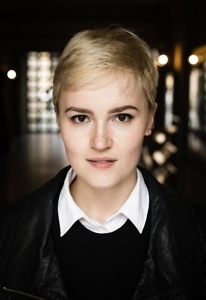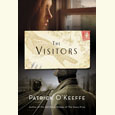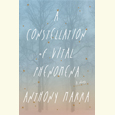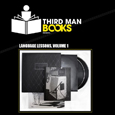A Dauntless Voyage
Veronica Roth moves her YA universe to deep space
Carve the Mark, the ambitious follow-up to Veronica Roth’s wildly successful Divergent series, is a whopping sci-fi novel weighing in at 480 pages. In it Roth graduates from building a dystopian society on Earth to creating an entire dystopian universe.

The novel centers around two characters whose fates have already been decided: Akos, a boy from an icy, agricultural planet; and Cyra, a daughter of the royal house of Shotet, the violent enemies of Akos’ people. These teens from rival cultures are thrown together in a war-torn time and forced to confront their own inner demons to have any chance of survival.
Does this scenario sound familiar to anyone?
Yes, like the Divergent series, Carve the Mark showcases the distinctive world-building that has made fans ravenous for each of Roth’s earlier books. Yes, this novel is filled with teens questioning their parents’ morality, their own values, and the legacy they want to leave behind. So what’s new here?
For starters, Roth avoids the stereotypes of good and evil and plays more this time with themes of duality. Cyra is the book’s heroine but also at times its villain: she is endowed with the current, the supreme energy source in her universe, but these visible, swirling currents cause as much agony to Cyra herself as they do to those she touches. When Akos’s people question her motives, she says, “You want to see people as extremes. Bad or good, trustworthy or not. … I understand. It’s easier that way. But that isn’t how people work.”
The characters in Carve the Mark are less sure of their destinies. (Oracles have delivered their fates, it’s true, but our protagonists don’t know what will happen along the way.) Each child in this universe is endowed with a gift which manifests around adolescence. Some gifts are physical, like channeling energy, and some are psychological, like putting people at ease. The result: infinite plot-twist possibilities with the introduction of each new character. This feature of Roth’s universe might complicate things for readers who aren’t already sci-fi fans, but because each otherworldly gift is grounded in a convincing characterization, the fantastic elements ring true.
All in all, Carve the Mark is ambitious—creating a universe automatically invites comparisons to heavy hitters like Asimov, Card, L’Engle, Lewis, and Lovecraft. But practical themes—the balance between love and pain, and the constant vacillation between hope and despair—also center the book in very Earthly concerns.
 As many YA authors move away from the moralism of classic children’s literature, much of the YA narrative today resides in the grey areas, and Roth’s newest world is no exception. For example, Cyra tries to comfort Akos for feeling shame at his new approach to violence: “All people are violent. Some resist the impulse, and some don’t. Better to acknowledge it, to use it as a point of access to the rest of your being, than to lie to yourself about it.” Such relativism situates Carve the Mark firmly in the most contemporary expression of YA literature.
As many YA authors move away from the moralism of classic children’s literature, much of the YA narrative today resides in the grey areas, and Roth’s newest world is no exception. For example, Cyra tries to comfort Akos for feeling shame at his new approach to violence: “All people are violent. Some resist the impulse, and some don’t. Better to acknowledge it, to use it as a point of access to the rest of your being, than to lie to yourself about it.” Such relativism situates Carve the Mark firmly in the most contemporary expression of YA literature.
Analysis aside, this novel is fun to read. There are frozen flowers blooming in blocks of ice, billowing grasses with hallucinogenic powers, spider-like creatures larger than adults, and wardrobe changes. Oh, the wardrobe changes! Also, because the book is told from a split perspective, part Akos and part Cyra, readers are privy to some perceptions that are especially interesting in the juicy moments when the characters examine their feelings for the other. The shifting points of view also allow a kind of emotional recovery time: because chapters often overlap, rehashing events from another perspective, readers are able to make sense of the complex narrative even as it unfolds.
For both teens and adults, Roth’s latest novel is a worthy read that stands up to the hype. And the best part? Carve the Mark is the first installment of a two-part narrative. (The release date of the second book has not been announced.)

Sarah Carter is a high-school English teacher living and working in Lebanon, Tennessee. She is currently an M.F.A. candidate at the Sewanee School of Letters.


